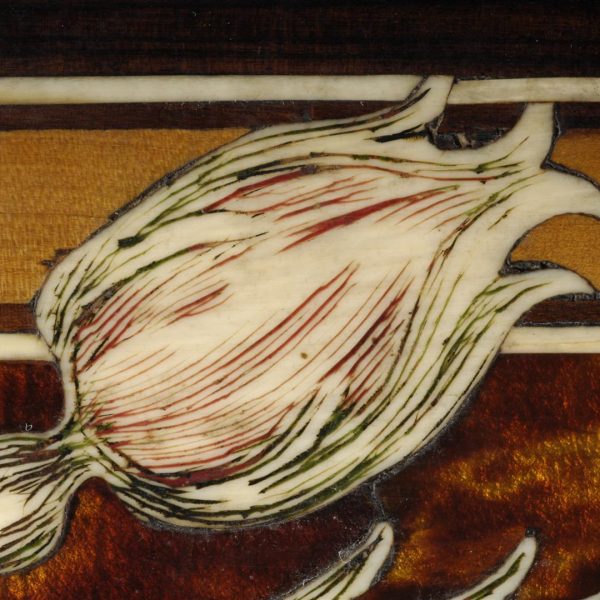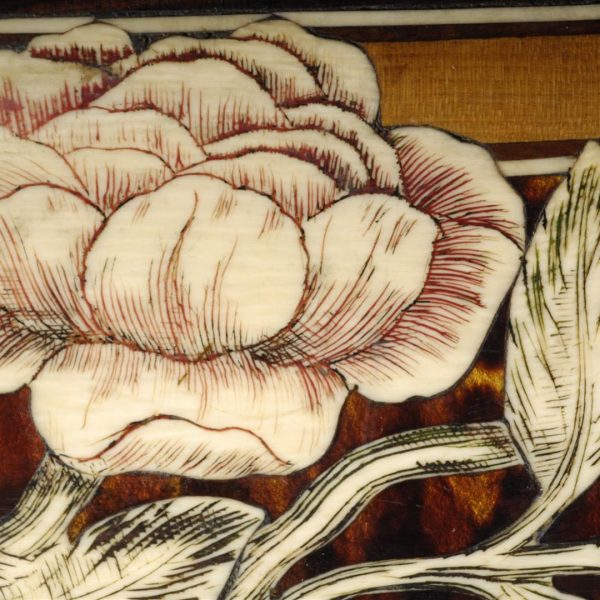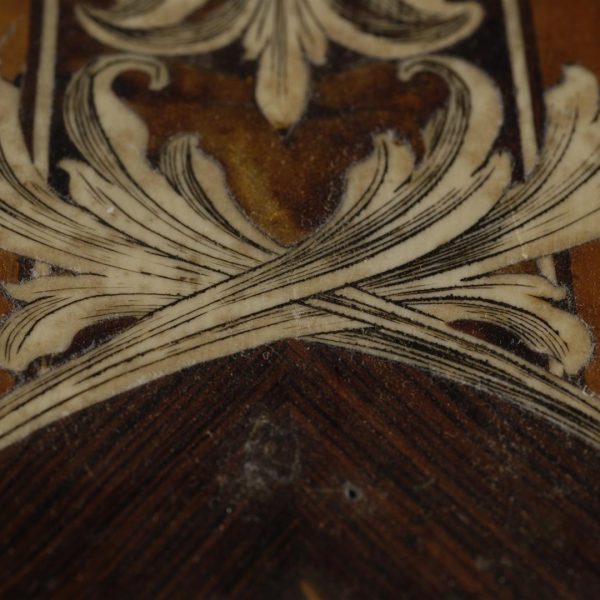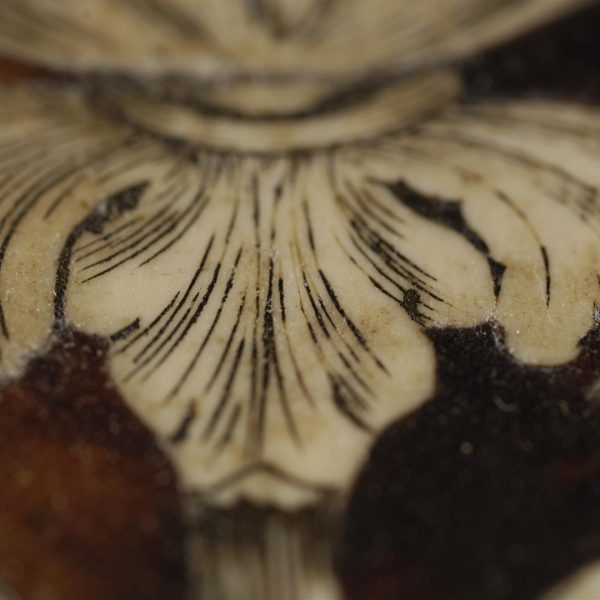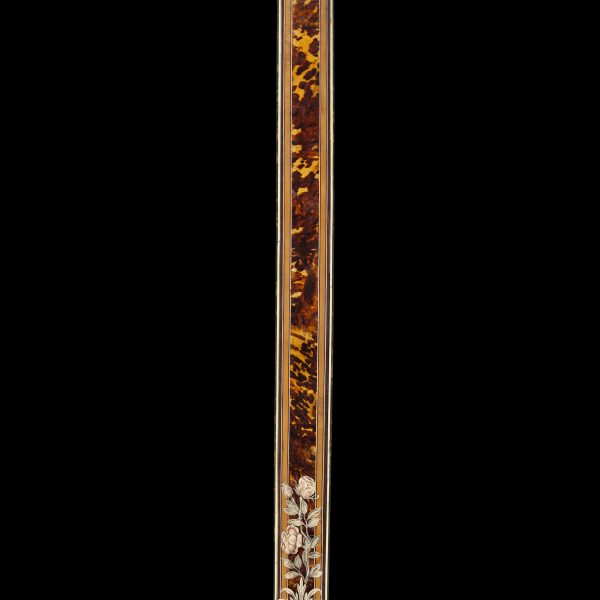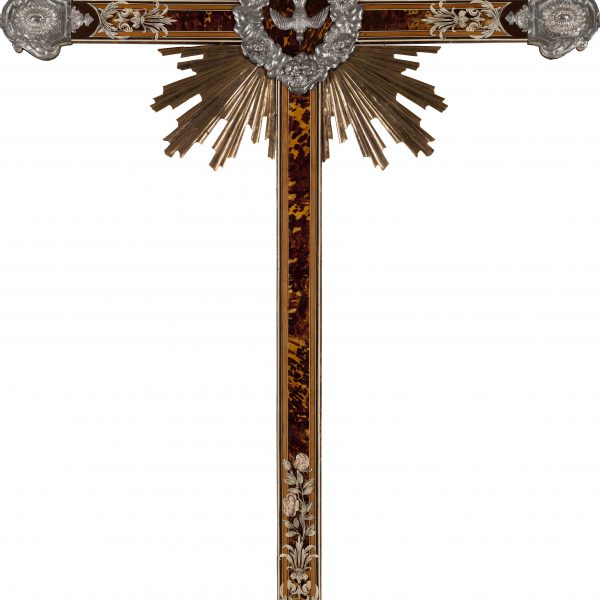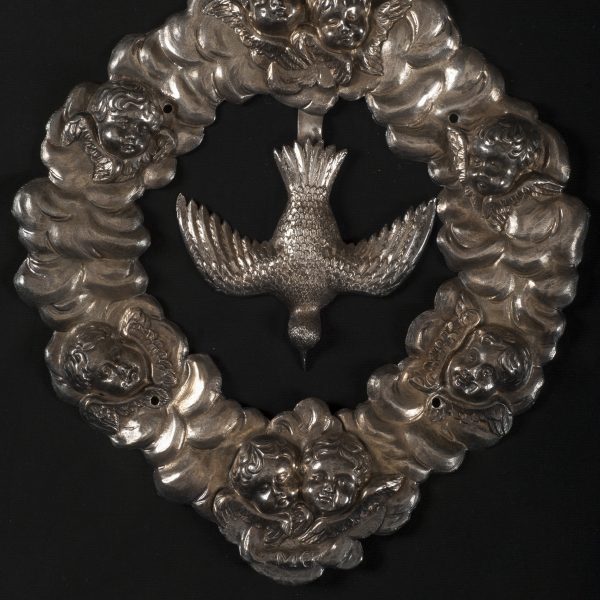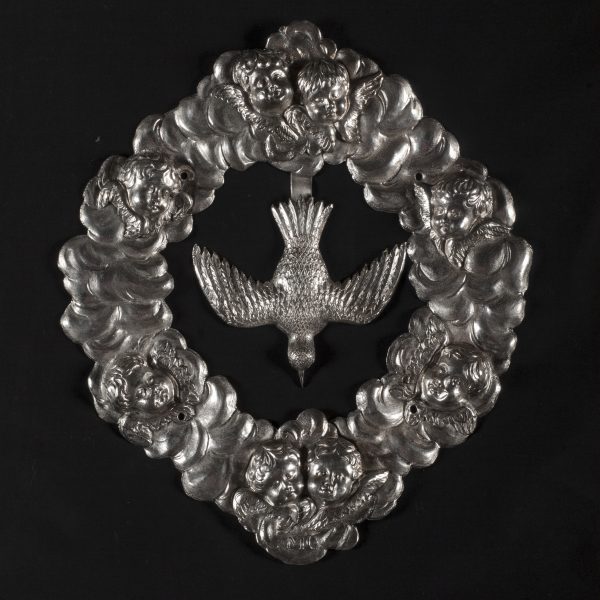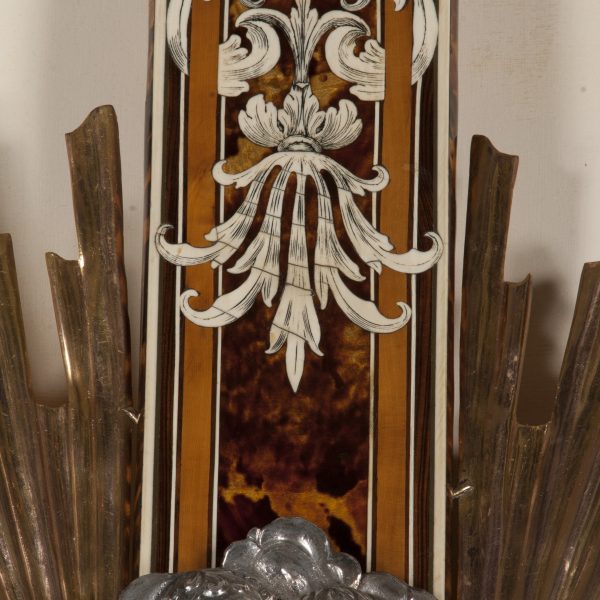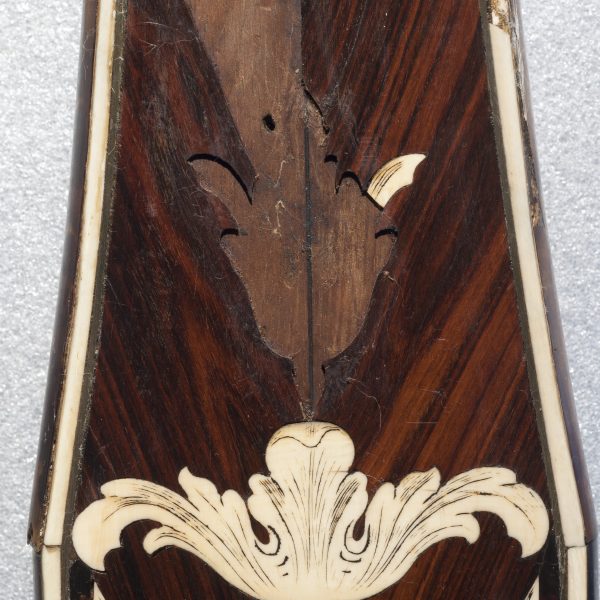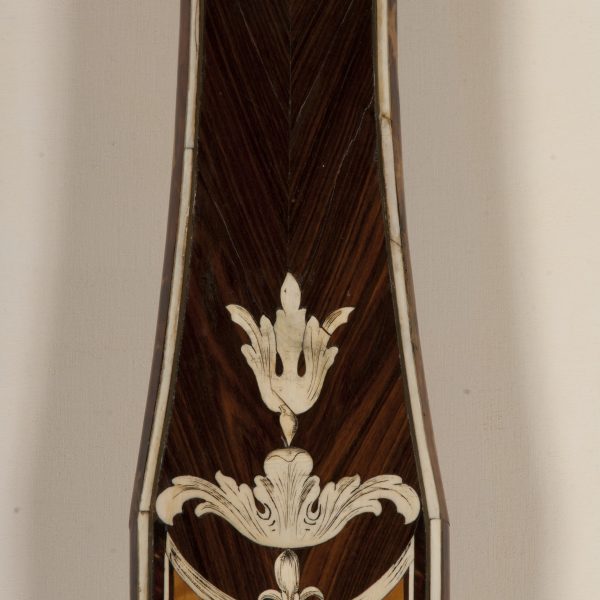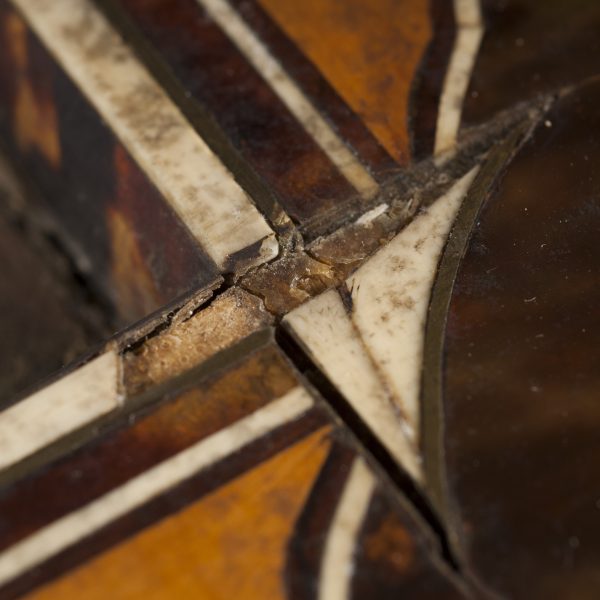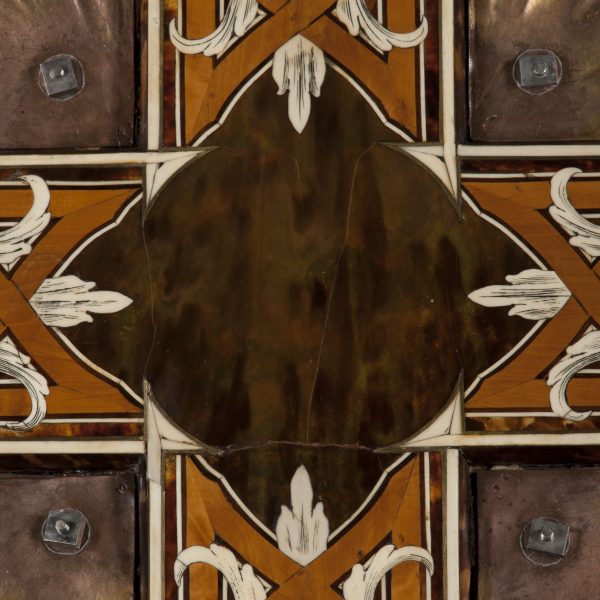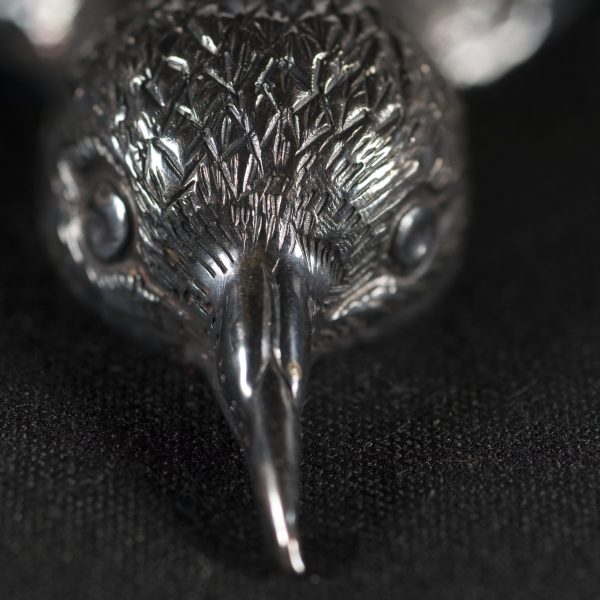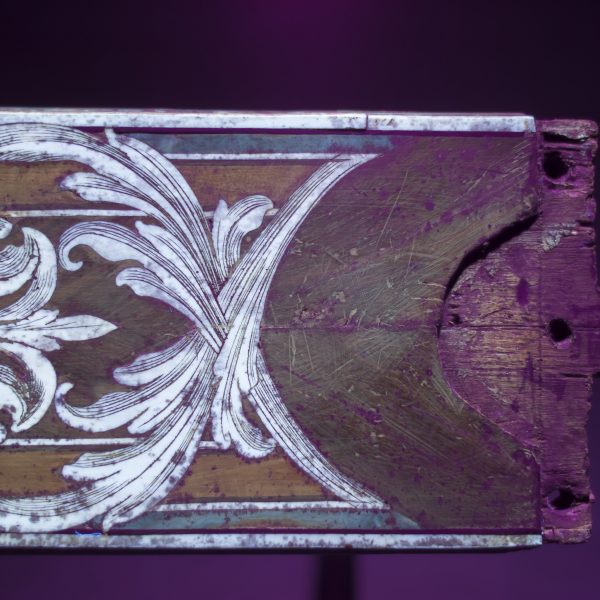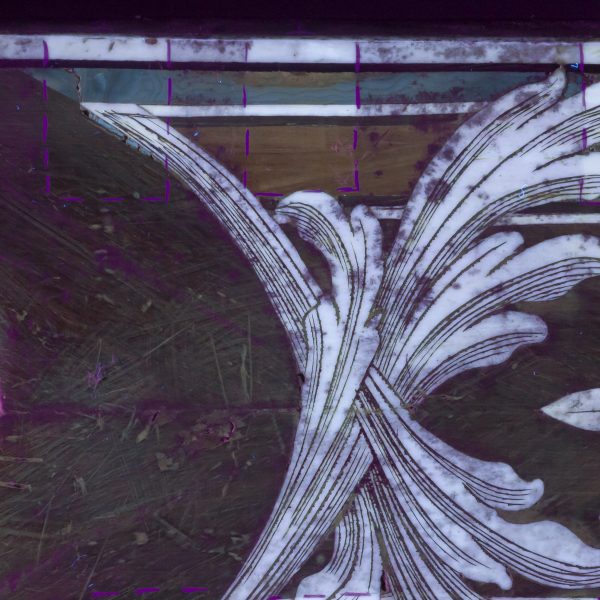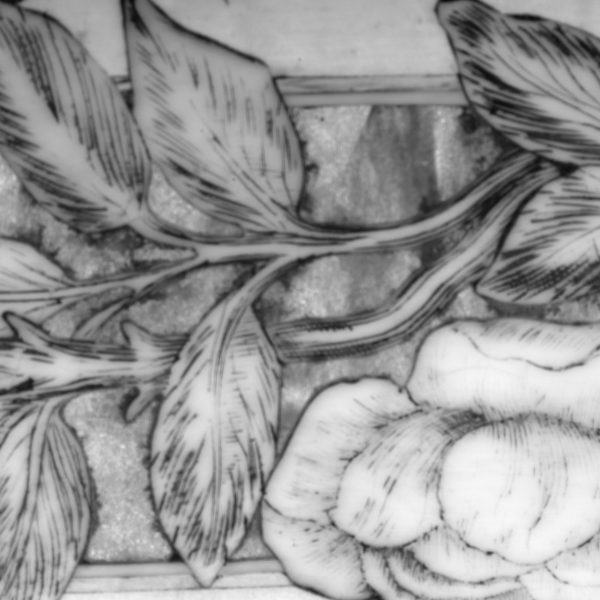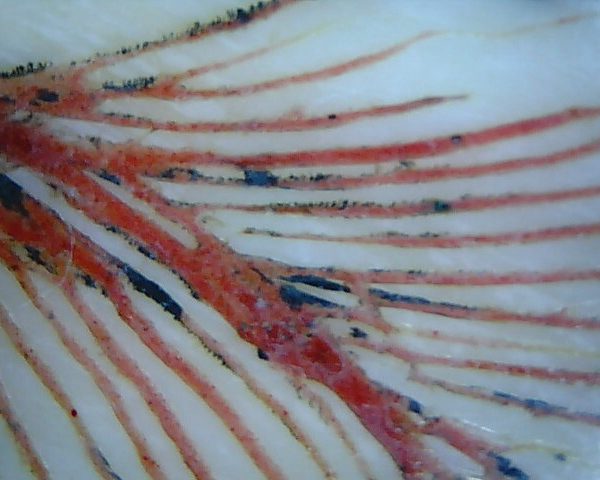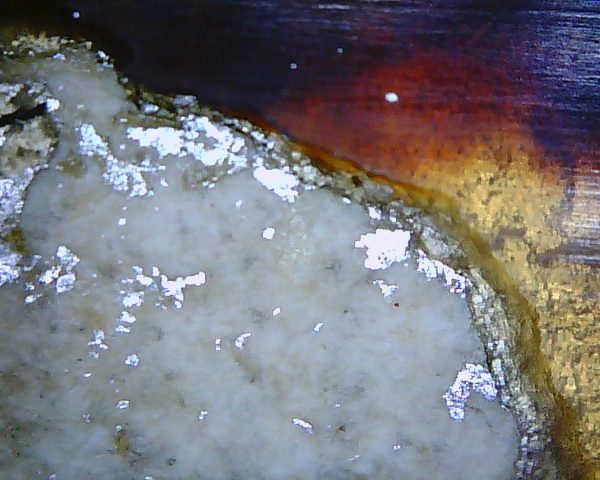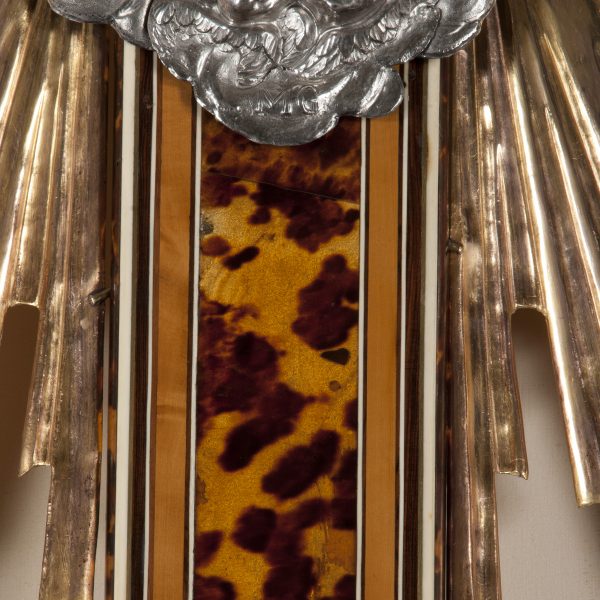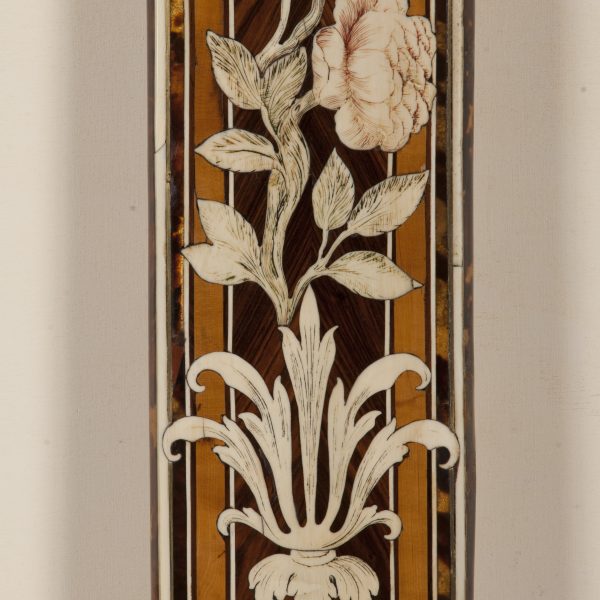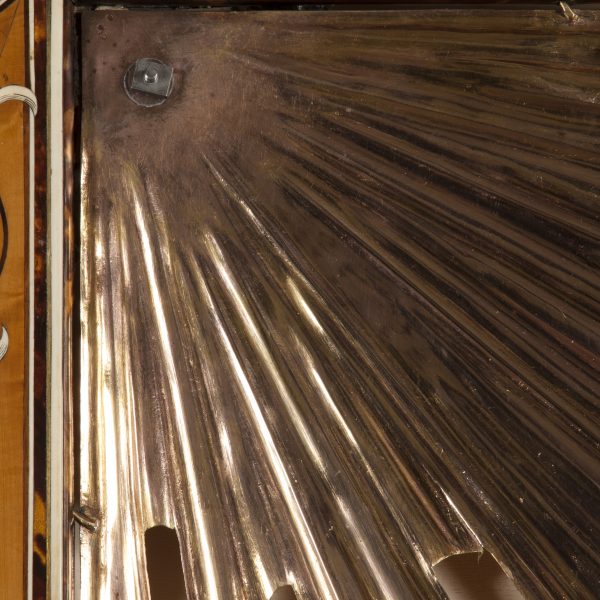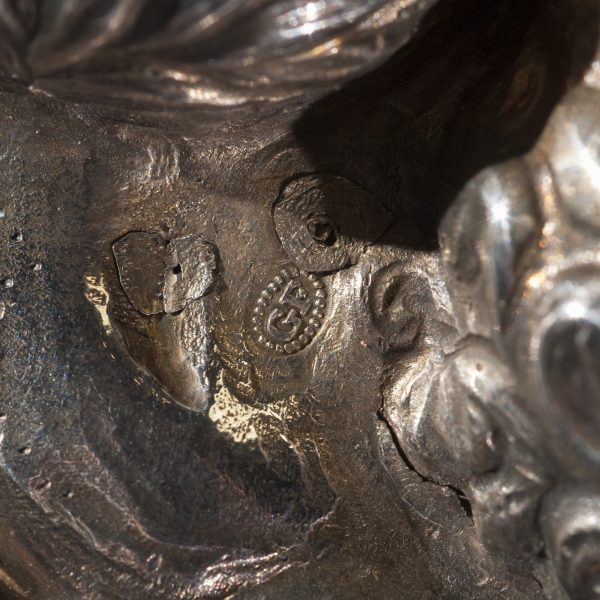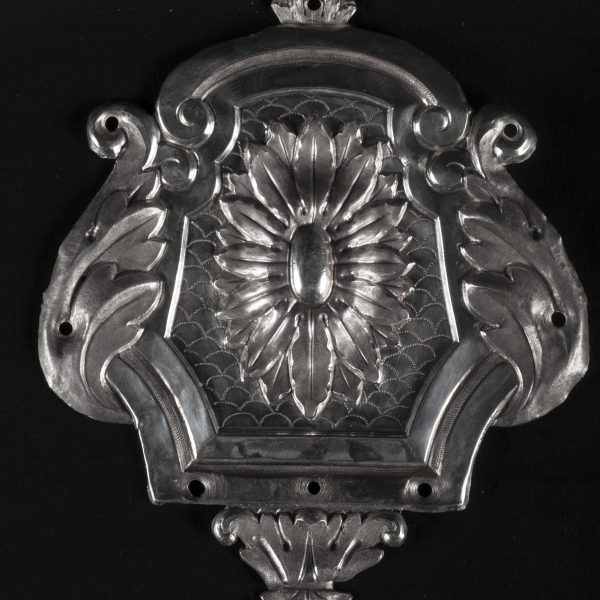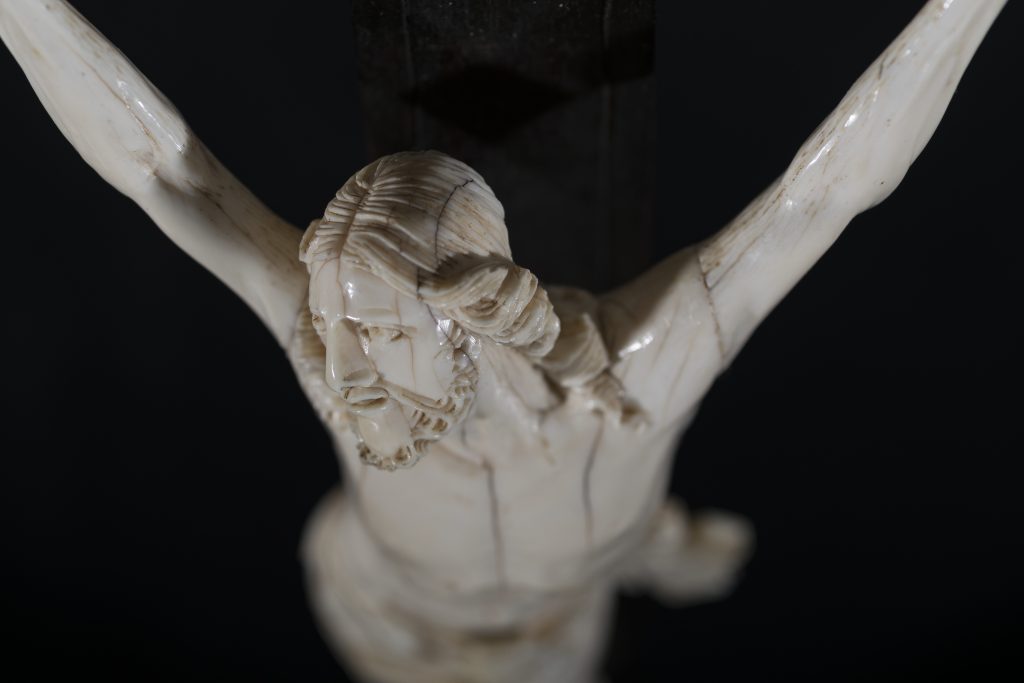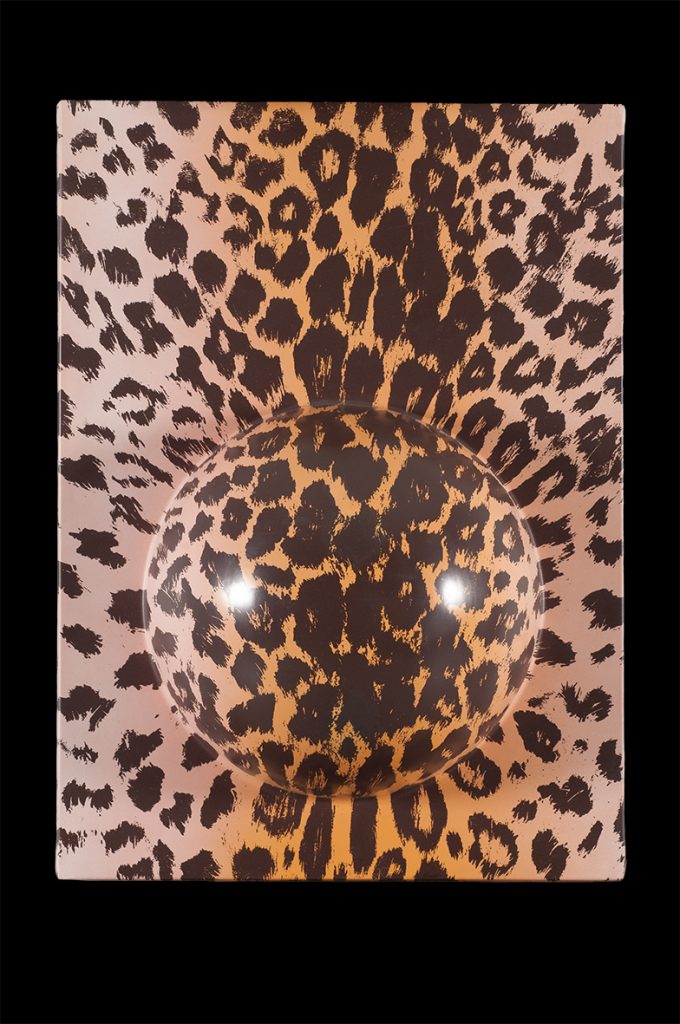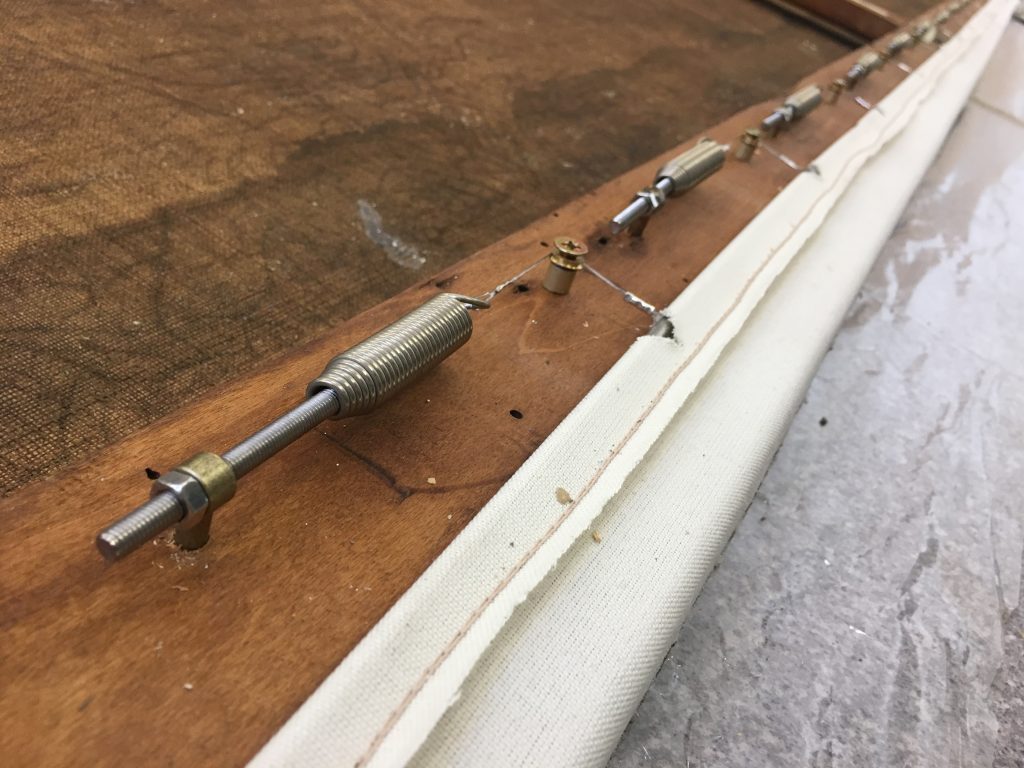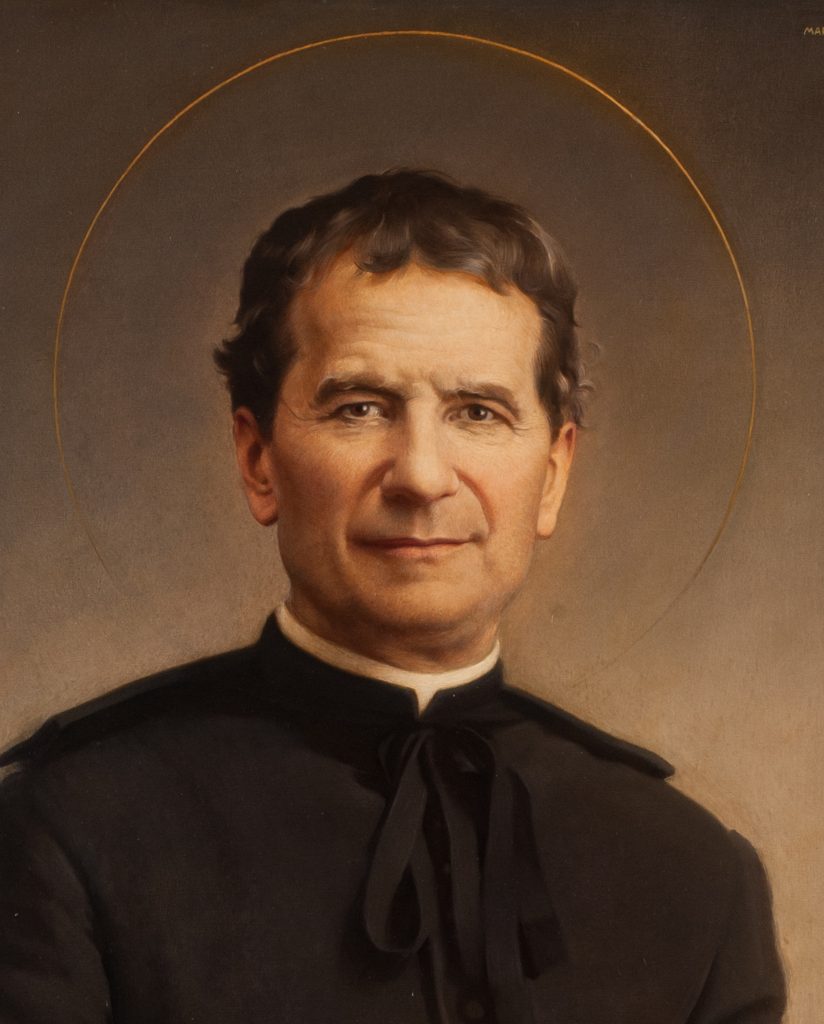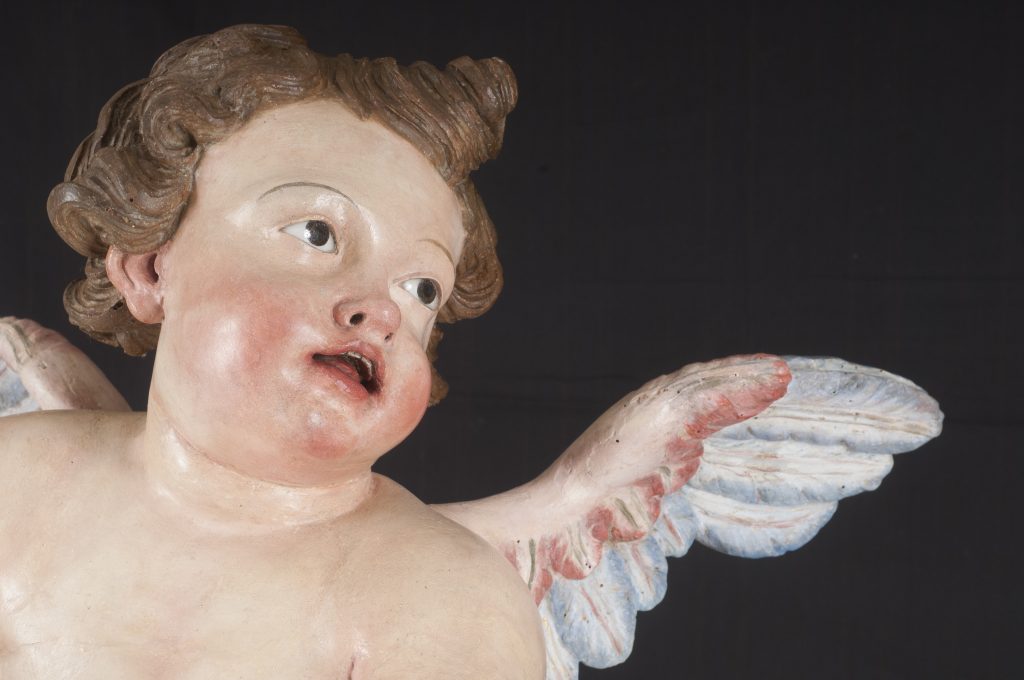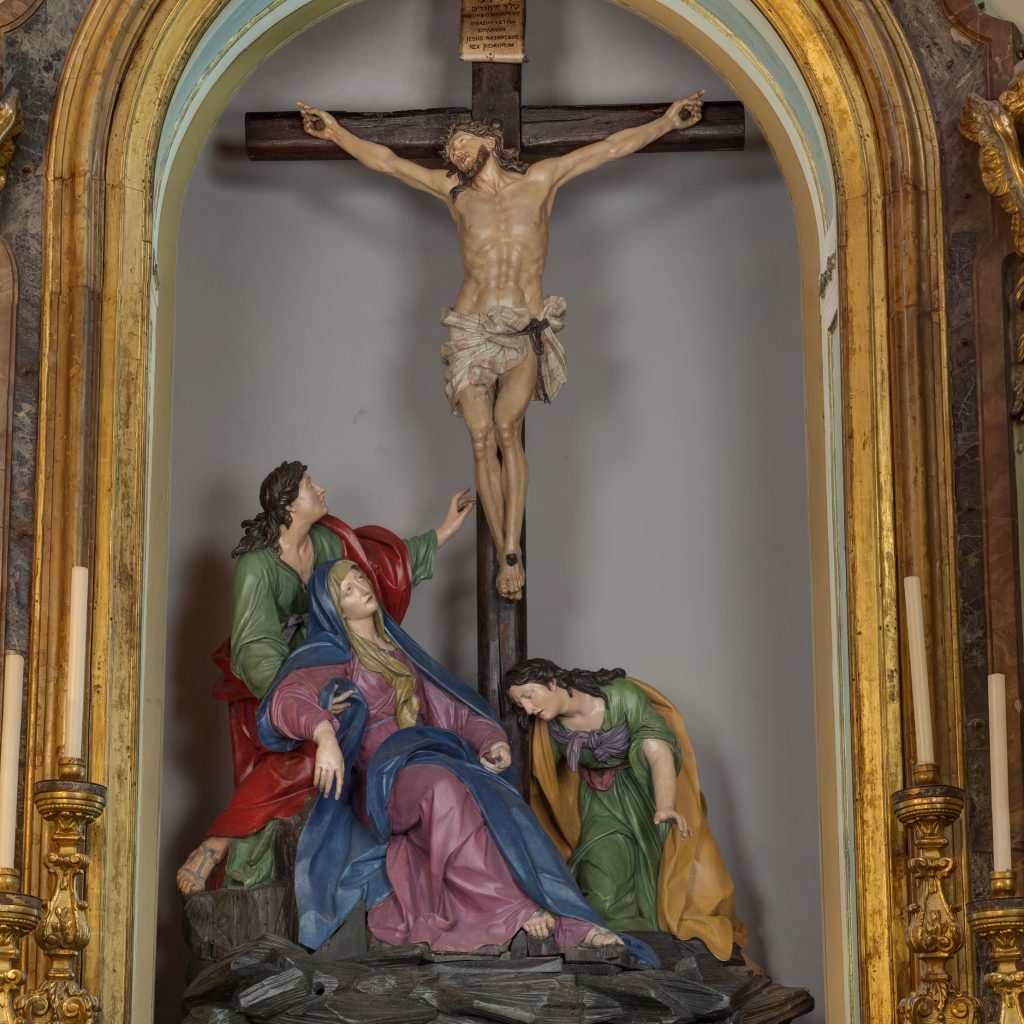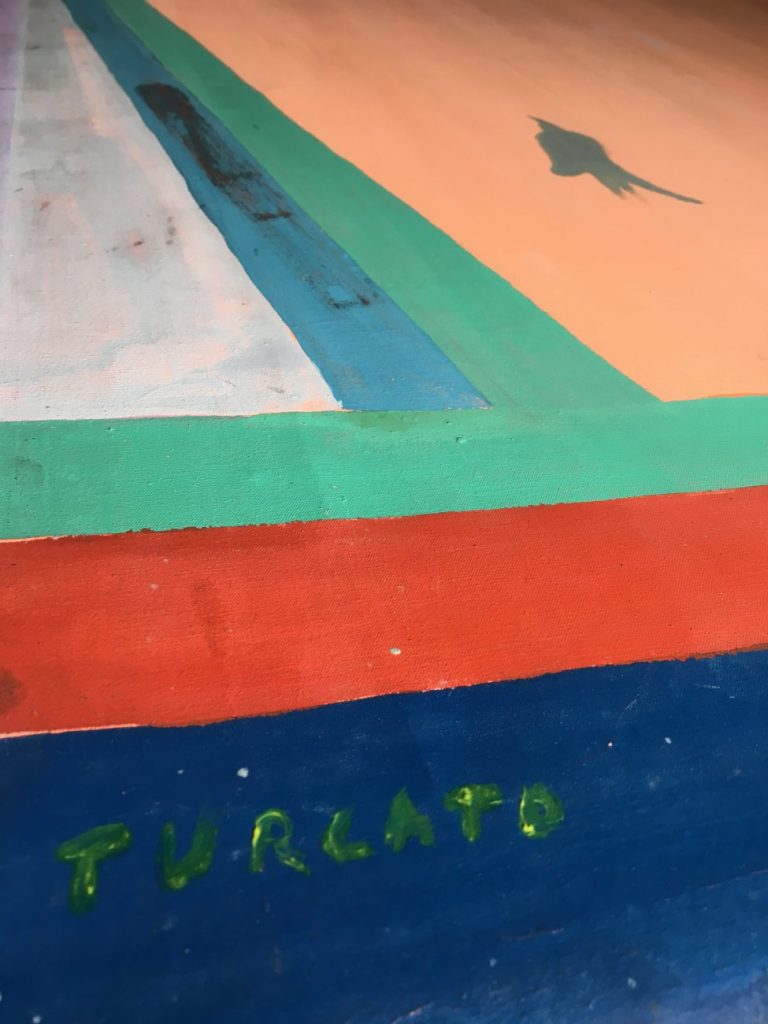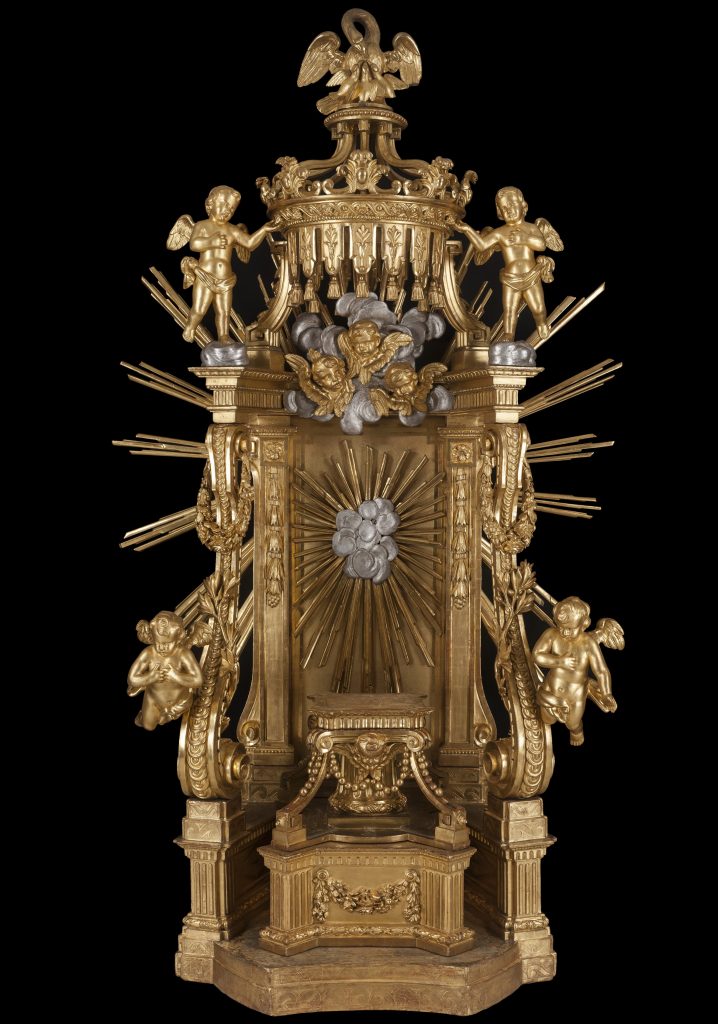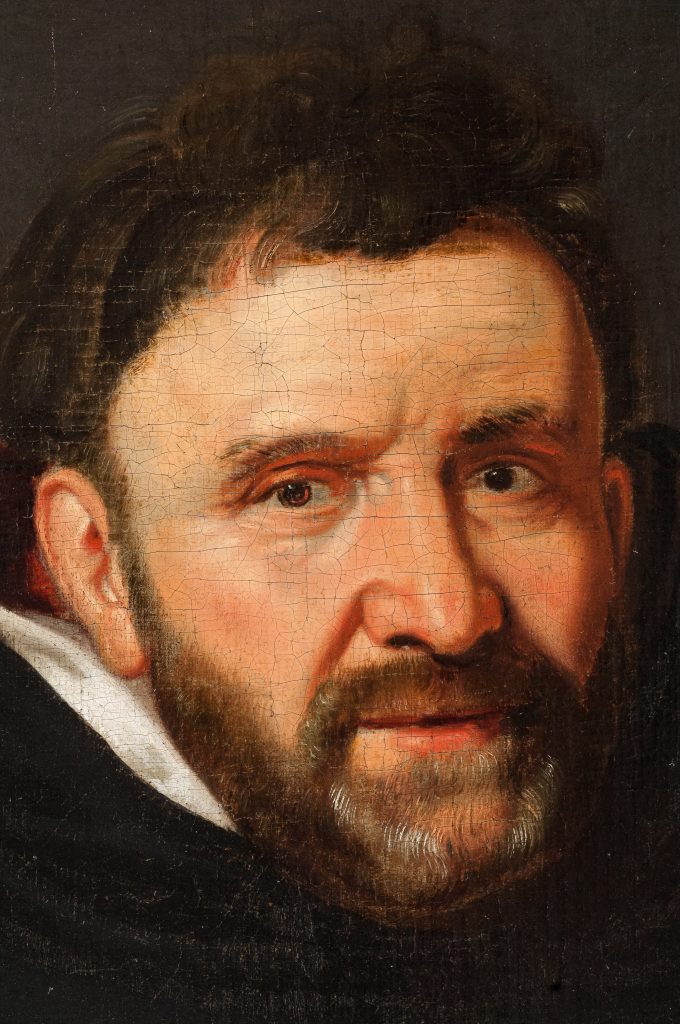Study and restoration work on the processional cross by Pietro Piffetti
Under the High Supervision of the Superintendence for Historical, Artistic and Ethno-anthropological Heritage of Piedmont
The inlaid cross for the sisters of the Confraternity of the Spirito Santo.
The inlaid cross was made before 1753, when G. G. Craveri, in his “Guida de’ forestieri per la real città di Torino”, mentions that the sisters “for the Processions have a beautiful wooden Cross, all covered with the finest tortoiseshell, adorned with fine ivory work, and bordered with selvedges, with the three Nails, Title, and Plate in the middle with the Dove, all in silver”. Information from the archives of the Archconfraternity now confirms the attribution of the cross to the cabinetmaker Pietro Piffetti and dates its execution to the end of the 1730s. Since 1736, the minutes of the meetings of the Confraternity Council contain the complaints of the sisters for the lack of a cross to be used “on the occasion of processions”: the construction was authorised in the meeting of 26 January 1738. On the same day, Lucia Margherita Burzio, Piffetti’s wife, was elected prioress. It is therefore possible to hypothesise that the cabinet-maker had decided to make the cross as a gift for his wife’s election, thus also satisfying the request of the Sisters.
The two sides of the cross are decorated in different ways: the front side has a circular insert that acts as a base to which the silver rays are screwed, the back side has a decoration made entirely with the inlay technique.
Piffetti chose to exploit the contrasting colours of the materials: the preciousness of ivory and tortoiseshell, with which he obtained the marbled effect, is enhanced by the fantasy of the floral motifs and the yellow ribbons in boxwood. The play created by the juxtaposition of naturalistic elements and angular geometric components follows the decorative experiments carried out in Piedmont in earlier years by the cabinetmaker Luigi Prinotto and reworked by Piffetti between 1735 and 1740 for the library of the Villa della Regina, now in the Quirinale.
These elements were made ad hoc for the cross, but at least the sunburst is to be considered later, probably made after the end of the 1780s, probably to replace the elements described in 1753 by Craveri. On the front side of the Glory of Cherubs it is possible to recognise two marks: the first one, “MG”, almost certainly to be interpreted as the acronym of the silversmith Giuseppe Mandola, whose activity is documented since 1787; the second one, “GF”, technically defined as “tasting punch”, is the mark used from 1789 by Giuseppe Fontana as official metal inspector on behalf of the Royal Mint of Turin. These dates are consistent with the discovery of some screws that fix the spokes, which can be dated after 1790.
Pietro Piffetti (1701-1777)
Education and the journey to Rome
Pietro Piffetti, was born in 1701, he came from a family of craftsmen specialising in woodworking. He graduated as a master cabinetmaker between 1721 and 1722, the year he married Lucia Margherita Burzio, daughter of the ‘minesmith’ Giuseppe Burzio.
His period of training in Rome is documented in a correspondence between the Marquis of Ormea, Secretary of State in Turin, and the Count of Gros, the Savoy ambassador in Rome.In 1730 Piffetti returned to Turin at the behest of Carlo Emanuele III. On 13 July 1731 he was appointed royal cabinet-maker, a position formalised by a royal licence like the one drawn up on the same day for the painter Claudio Francesco Beaumont: he too was recalled from Rome in 1731 at the behest of the new sovereign, who would soon employ both artists in various court workshops.
Activities for the court
With his appointment as royal cabinetmaker, Piffetti began an intense activity for the court. The first great test for the Royal Palace is dated between 1731 and 1733, when he was engaged in the realisation of the complex furnishings for the Cabinet of the Secret Manege in the Royal Palace, executed with the collaboration of Francesco Ladatte under the direction of Filippo Juvarra. The Court’s expense registers record the design and production of precious inlaid furniture, indicating numerous works for the Royal Palace, the hunting lodge of Stupinigi and the palace of Venaria Reale. Piffetti was active as royal cabinet-maker until 1775, also carrying out ‘raccomodo’ work, i.e. repairing the wooden furnishings in the royal residences. The royal licence with which he had been admitted to the court in fact established “the obligation to keep in good condition all our existing furniture and that will be both in this city and in other places of pleasure”.
The link with the Confraternity of the Spirito Santo
In 1735 Piffetti drew up his first will, requesting to be buried in the “Church of the Most Venerable Confraternity of the Spirito Santo”, where he was registered as a confrere until 1743. The link with the Confraternity probably lasted all his life, although this information is not documented after the 1940s, due to some gaps in the documentation of the archives of the Archconfraternity (on deposit at the Archbishop’s Archive). It is possible that in the missing folders from the second half of the 18th century there was also a trace of the cabinetmaker’s election as prior: as before him the silversmith Francesco Ladatte in 1750. This information can be deduced from the deed of sale “of some precious furniture left by Signor Pietro Piffetti … Brother Prior”, drawn up on the occasion of an auction organised by the Confraternity itself shortly after 1777, the year of the artist’s death.
The church of the Spirito Santo can also be visited thanks to the collaboration of the Touring Club Volunteers for Cultural Heritage who have been involved in the “Aperti per Voi” (Open for You) project, which since 2005 has been making palaces, museums, monuments, archaeological sites and churches accessible and enjoyable all over Italy; places of culture “adopted” by the Italian Touring Club and animated by meetings, concerts and exhibitions, and which has already exceeded three million visitors.

